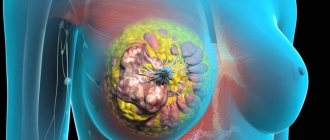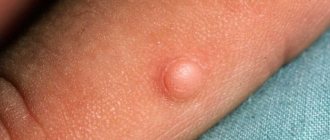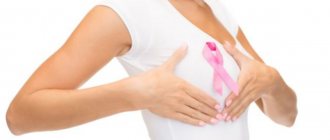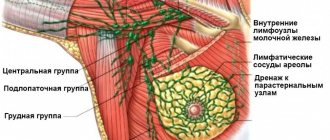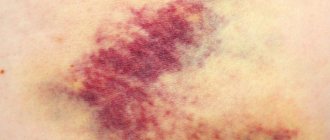Undoubtedly, breast fibroadenoma is a complex and ambiguous disease, but the most unpleasant thing is that this disease is practically unpredictable. This is probably why this disease causes a lot of speculation, justified and unjustified prohibitions or contraindications.
Which of these contraindications have a scientific basis, and which are nothing more than ordinary people’s talk. For example, many contraindications, such as a complete ban on any intensity of sunbathing (tanning), are significantly exaggerated.
Although, they undoubtedly make sense, but in much smaller volumes than is customary to talk about.
Traditional medicine is convinced that sunbathing, early in the morning or after five o'clock in the evening, in a swimsuit that conceals the breasts, for a moderate amount of time, can undoubtedly only benefit all women.
Including patients who suffer from a disease such as breast fibroadenoma (if the tumor is not actively growing and is under medical supervision).
In addition, an incredible amount of disagreement is caused by questions regarding how a woman should eat properly and how her lifestyle should change after receiving a diagnosis of breast fibroadenoma.
After all, doctors have long proven that a properly selected diet (which is a properly balanced diet) can significantly help in recovery or alleviation of the symptoms of fibrocystic disease.
But, nevertheless, answers to questions regarding reasonable prohibitions or contraindications that women diagnosed with breast fibroadenoma should adhere to should be sought in the reasons for the development of this pathology.
What is fibroadenoma
Fibrous adenoma of the mammary gland is a formation that is based in the upper part of the right or left breast. The nature of this tumor is mobile, and its shape is most often clearly defined, which is easy to identify even by independently palpating the mammary gland.
Fibroadenoma of the female mammary gland consists of overgrown connective tissue. The tumor has a round shape, is not associated with the skin and is painless on palpation. The size of the formation usually ranges from 7.5 cm. This is approximately how you can answer the question of what a fibrous adenoma looks like.
It is quite difficult to confuse this type of tumor with cancer if you know the characteristic differences between these tumors in the mammary gland. So, with cancer, the tumor does not have a clear contour, it is very motionless and difficult to move. But fibroadenoma moves very easily and has a capsule.
Most often, the appearance of this type of tumor is influenced by hormonal levels. These include:
- pituitary;
- thyroid gland;
- adrenal hormones;
- ovaries.
A dangerous risk factor for the appearance of fibrous adenoma is a violation of the reproductive and central nervous systems. It is worth considering that during hormonal imbalances and nervous shocks in women and girls, the mammary gland is the first to suffer.
Preparing for surgery
Before surgery, it is necessary to determine the type of fibroadenoma, its exact location, size and structure.
Diagnostics includes the following basic instrumental and laboratory studies:
- Ultrasound. This is the main diagnostic method that allows you to determine all the main parameters.
- Mammography (special radiography). It is carried out to determine the lifespan of the formation, in particular by impregnation of the fibroma with calcium salts.
- Biopsy. It is necessary to determine the structure of the tumor and identify oncology at an early stage. The biopsy specimen is sent for cytological and histological studies.
- MRI. It is carried out additionally for a detailed study of pathology.
In the preparatory period before surgery, a comprehensive blood test is performed . The hormonal status is examined, i.e. levels of essential hormones.
A blood clotting test is required. The blood formula is determined (the content of hemoglobin in blood cells and other components).
In some cases, a test for tumor markers is necessary, as well as for allergic reactions (necessarily to an anesthetic drug).
There are no special restrictions before surgery regarding nutrition and lifestyle. In principle, it can be produced at any time of the year.
Often women have a question about which day of the menstrual cycle is best for surgical treatment.
Experts believe that the operation is best done within 10-20 days from the start of menstruation, which is associated with hormonal changes..
Types of fibroadenomas
Doctors distinguish several main types of fibrous adenoma:
- Perikanalicular. With this type, patients experience an overgrowth of connective tissue around the ducts.
- Intracanalicular. The tissues grow into the ducts themselves, namely into their lumen.
- Mixed type. Combines the characteristic features of the first and second types.
- Phylloid. It is the most dangerous type of fibroadenoma.
Phylloid tumor also has a more common name, which sounds like leaf-shaped fibroadenoma. This name is explained by the lobular structure of the tumor. The most common question from patients who have received this diagnosis is: why is such fibroadenoma dangerous? In 10% of cases, the leaf-shaped form degenerates into sarcoma, which indicates a malignant formation. Also, phyllodes fibrous adenoma progresses very much and increases in size.
The most important test is a biopsy. This study allows you to timely determine the presence of atypical, malignant cells in the tissues of the tumor. Leaf fibroadenoma can reach unhealthy, gigantic sizes. Even if it is removed, the woman’s previous breast shape is lost, and the bust can be returned to its normal appearance by contacting a plastic surgeon.
Postoperative recommendations
After discharge from the hospital, a woman must adhere to certain recommendations throughout the entire recovery period:
- It is necessary to choose the optimal bra, agreed with your doctor.
- Dressing should be done at least every other day.
- All physical activity is eliminated for 8-12 days. Adequate rest is provided, allowing for recuperation and psychological rehabilitation.
- Nutrition should be optimal. A diet high in vitamin C and protein is recommended.
- Water procedures are permitted only with the permission of a doctor.
- Creams and gels are used to eliminate swelling and bruises. Contractubex gel is considered effective.
If severe symptoms appear, you should immediately consult a doctor.
The return to the usual way of life is gradual.
Symptoms
A characteristic sign of a benign tumor is the absence of any symptoms indicating its presence. So, for women, the most important method of early diagnosis in this case is manually palpating the breasts in order to determine the condition of the mammary glands.
A small fibroadenoma does not indicate its existence at all. Quite often, such tumors are detected by chance during an examination by a doctor or a woman’s independent palpation of the breast. The found formation can be very small (about 2-2.5 cm), it has a round, clear shape, easily moves inside the mammary gland and does not change its position when changing body position.
The symptoms of this disease are quite specific.
Main symptoms
- Fibroadenoma, being a benign tumor, does not cause any discomfort. It is painless and does not cause spasms when pressed or exercised.
- The structure of such a tumor, despite its size, is quite dense and homogeneous.
- Some women experience a sudden and unexplained increase or decrease in tumor size.
- Changes in the shape, size, mobility or other parameters of the tumor are in no way related to the patient’s menstrual cycle.
- Signs of inflammation are completely absent.
It is worth noting that fibroadenoma can almost never be noticed visually. This is possible only in rare cases when the patient has small breasts and is extremely thin, as well as in situations where the tumor has reached a significant size.
Additional symptoms
Additional symptoms most often arise from the very cause of fibroadenoma – hormonal imbalances. That is why the patient may experience disturbances in the healthy functioning of the thyroid gland. If such a problem appears, you should contact an endocrinologist. Signs that may indicate a problem with the thyroid gland include:
- feeling of a lump in the throat;
- strong heartbeat (tachycardia);
- slight shortness of breath;
- desire to cough;
- enlargement of the thyroid gland, which also manifests itself externally.
Almost every woman has experienced menstrual pain at least once in her life. If there is a fibroadenoma in a woman’s mammary gland, the pain can increase dramatically. The pain syndrome can be expressed in heaviness in the lower abdomen or more severe symptoms, such as acute spasms alternating with mild nausea and radiating to the lower back.
Signs for which surgery is recommended
Breast fibroadenoma requires surgical treatment. Although cases when the tumor resolves on its own cannot be ruled out. Such cases are typical for women whose tumor appeared during puberty or while carrying a child.
An immature tumor (a neoplasm that does not have clear boundaries and has a loose structure) can also resolve. Typically, complete resorption of immature fibroadenoma occurs within 5 or more years.
The help of surgeons is needed in cases where a woman observes suspicious symptoms, including:
- rapid growth of the tumor;
- the lump in the breast has changed its structure, become more rigid, and has lost its clear boundaries;
- the neoplasm has reached a very large size;
- The doctor has identified the possibility of developing cancer cells.
Often surgery is prescribed for purely cosmetic purposes. This is necessary in case of deformation of the right or left mammary gland. Fibroadenoma is also removed for those patients who are overly afraid of the development of cancerous tumors; in this case, the removal of a benign tumor occurs for preventive purposes.
When to expect the results of cryoablation
Liquid nitrogen does not immediately dissolve fibroadenoma tissue; it only causes irreversible damage to tumor cells. Therefore, on the first day after the manipulation, in rare cases, unpleasant sensations, a feeling of discomfort, and, less often, pain occur. It can be stopped by taking a tablet of Ketorolac, Analgin or Nimesulide. If the pain persists for several days, you should consult your doctor.
The body destroys dead cells and replaces them with healthy tissue. This process lasts about a year. Therefore, in the first months, fibroadenoma can be felt, but gradually it becomes smaller.
At the Surgery Center, cryoablation of breast fibroadenomas is performed by experienced mammologists. To make an appointment, call the phone number listed on the website or fill out the feedback form.
Causes of the disease
The diagnosis of breast fibroadenoma also implies a number of reasons that lead to the disease. The whole danger of the disease lies in the fact that scientists have not identified the exact cause of the appearance of this benign tumor in women. But there are a number of assumptions regarding what most often leads to the appearance of pathology. Conventionally, causes are divided into internal and external.
Internal causes of adenoma:
- hormonal disbalance. The most common case is when the amount of estrogen exceeds the permissible limits. This happens during pregnancy and during puberty;
- liver diseases;
- thyroid diseases;
- problems with the pituitary gland;
- obesity;
- diabetes;
- ovarian pathologies;
- gynecological problems and menstrual irregularities.
External reasons:
- exhaustion;
- nervous tension;
- ecology;
- severe stress and depression;
- prolonged exposure to the sun or frequent visits to the solarium;
- breast injuries;
- frequent hot showers or baths (water temperature above 37.5 degrees), enthusiasm for going to the sauna or bathhouse.
Doctors identify a number of additional factors that can cause signs of breast fibroadenoma:
- frequent abortions;
- hormone therapy;
- menopause;
- incorrectly selected oral contraceptives;
- the presence of an intrauterine device.
Therapeutic methods for eliminating pain
There are no special treatment methods to eliminate only pain from fibroadenoma, since pain is absolutely not typical for this tumor (besides its leaf-shaped form). Therefore, it is important to first establish the cause of such discomfort and only then begin treatment.
In any case, relieving pain with painkillers is just a measure that brings temporary relief, but the problem does not disappear and requires an appropriate therapeutic approach.
On the other hand, frequent use of analgesics can blur the clinical picture, and thereby make it difficult for the doctor to diagnose.
Conservative therapy
What to do if pain occurs? Doctors believe that the best solution to relieve it is to eliminate the root cause of the discomfort, that is, fibroadenoma and other present diseases that cause its pain.
Drug treatment is practiced for small tumors (no more than 5 cm) using the following methods:
- Hormone therapy.
- Homeopathy.
- Folk remedies.
- Minimally invasive methods of tumor removal.
If it hurts due to other factors:
| Cause | Features of treatment |
| Hormonal imbalance | Hormonal and homeopathic medications are used: Indinol, Duphaston, Progestogel, Mastodinon, Mastofit Evalar, Mamoclam. Additionally, vitamin E and vitamin complexes are prescribed - Alphabet, Duovit, etc. |
| Mastitis | A course is prescribed: - Antibiotics. - Anti-inflammatory. - Painkillers. |
| Against the background of premenstrual syndrome | A gel for external use based on progesterone is prescribed. The medicine is applied to the mammary gland 2 times a day or according to the regimen prescribed by the doctor. Penetrating into the structure of the breast, the ointment relieves swelling of the connective tissue, thereby eliminating compression of the fibroadenoma, which leads to the disappearance of pain. |
| Lactostasis | When breastfeeding, it is necessary to take appropriate therapeutic measures to eliminate blockage of the milk duct and stagnation of milk. |
| Osteochondrosis | Consultation with a vertebrologist and other highly specialized specialists is required. Treatment of osteochondrosis is carried out comprehensively using medications and physiotherapy. |
Folk remedies
A variety of herbal infusions and decoctions can help a woman feel better and relieve an unpleasant symptom. However, their use must be agreed with your doctor.
Recipes:
- Infusion of bird's knotweed. For 1 tbsp. A spoonful of chopped herbs will require 200 ml of boiling water. Let it brew for 30 minutes and take before meals.
- Infusion of yarrow. Take 1 tbsp. vegetable raw materials, pour boiling water (200 ml). Leave for 2 hours, strain and consume 2 times a day.
- Camomile tea. Dried chamomile in the amount of 1 tbsp. pour 200 ml of just boiled water, leave for 20 minutes and drink before each meal.
Minimally invasive methods
Low-traumatic methods for removing lumps that do not require cutting the breast tissue:
- Laser therapy. The structure of the tumor is destroyed by exposure to a laser beam.
- High frequency ablation. The area of the tumor is influenced by radio waves. Exposure to cauterization leads to the death of fibroadenoma. The tissue is removed through a small incision.
- Cryoablation. The tissues of the tumor are frozen.
- Ultrasound biopsy. A microscopic incision is made on the chest under local anesthesia. A special device is used to suck out the contents of the seal.
- Ozone therapy. Ozone mixtures are found locally in the tumor tissue.
- Echo therapy. The neoplasm is exposed to ultrasound, as a result of which the seal heats up and dies.
Radical treatment
Fibroadenoma must be removed if, against the background of constant pain, an additional clinical picture is noted:
- Rapid increase in node.
- The compaction has reached an impressive size.
- Changes in the structure and consistency of the tumor.
- There is a risk of developing atypical cells.
Two types of operation are practiced:
- Enucleation. It is performed for leaf-shaped fibroadenoma.
- Lumpectomy. Eliminates with some adjacent tissue.
Fibroadenoma and pregnancy
Treatment of breast fibroadenoma without surgery is possible, but there are cases when such therapy is not appropriate. One of the reasons for surgical removal of fibroadenoma is a woman’s desire to become pregnant. In this case, it is better to remove the tumor than to deal with its rapid growth after childbirth.
A tumor can block a woman’s milk ducts, and this will lead to the inability to feed the baby on her own, as well as other unpleasant consequences. So, a woman may develop mastopathy. This disease can also be cured, but the disease itself is very dangerous, and the likelihood of developing breast cancer increases significantly.
The essence of pathology
The term “fibroadenoma” consists of three keywords that reflect the essence of the pathology - fibers, glandular component and tumor.
Thus, fibroadenoma is a tumor disease of the mammary gland that develops due to pathological proliferation of connective tissue fibers.
As a rule, the causes of the disease are hormonal imbalances - both natural (puberty, pregnancy, lactation, menopause) and pathological.
Under certain circumstances, some types of fibroadenoma can transform into a malignant neoplasm.
The disease is divided into several forms, which differ in histological characteristics.
Diagnostics
When diagnosing the disease, the following methods are used:
- Ultrasound (ultrasound examination method);
- mammography;
- puncture.
Any breast examination by a doctor begins with palpation. However, this method is not sufficient to make a diagnosis. Breast fibroadenoma is better visible on ultrasound.
Mammography clearly indicates the presence of a formation in the breast and allows you to become familiar with its size and shape. The examination is completed by collecting a puncture. In this case, cells taken from the formation are sent for research. The puncture allows the patient and the doctor to verify that the formation is not malignant. Before you begin to treat breast fibroadenoma, you should definitely go through all stages of diagnosis.
How does the procedure work?
Cryoablation of fibroadenoma takes little time. The patient is placed comfortably on the surgical table, and the chest is exposed. It is treated with an antiseptic and the injection site is numbed. It is important to notify your doctor in advance if you are allergic to Ultracaine or Lidocaine.
Using an ultrasound sensor, a tumor is found and its position is recorded. A thin cryoprobe needle is carefully inserted into the center of the node, making a puncture in the skin. The weight of the process is controlled using ultrasound. Next, liquid nitrogen is quickly injected through the cryoprobe. It forms an ice ball at the end of the needle, which is clearly visible on ultrasound. Therefore, the doctor can accurately determine the volume of the substance administered.
The cryoprobe is quickly removed; there is no need to place sutures on the skin. The patient can get dressed and go home.
Treatment
There are three main methods of treating fibroadenoma:
- Observation.
- Hormonal therapy.
- Surgical intervention.
A dynamic type of observation is prescribed if the size of the node does not exceed 1-2 cm and does not bring any discomfort to the patient. The same method is also used in the case when several nodes that are not prone to growth are identified in the patient.
Treatment is prescribed in cases where fibroadenoma begins to grow rapidly. Almost all women wonder how hormonal treatment works and what it is? The introduction of hormones into therapy involves taking medications that eliminate hormonal imbalance. But more often than not, such drugs only reduce the size of the tumor. The main way to combat fibroadenoma is surgery.
Recovery after surgery
The primary recovery period after surgery is characterized by several conditions:
- The duration of the recovery period after surgery depends on its complexity and radicality. On average it is 4-7 days. With sectoral resection it increases to 10-15 days, and after complete resection - up to 1-1.5 months.
- Hospitalization usually lasts 2-4 days and depends on the speed of recovery.
- First of all, special attention is paid to the psychological factor associated with surgery on such an important organ for any woman.
- Painful sensations can last 3-5 days. To eliminate them, painkillers are prescribed.
- Removing stitches. They are removed after complete restoration of damaged tissue. This usually occurs 14-20 days after surgery. Manipulations are carried out under local anesthesia. Modern clinics use self-absorbing threads that do not need to be removed.
With a high-quality operation performed by a specialist, scars after removal of sutures almost completely disappear after 2-3 months.
Small scars in hidden places are possible with radical types of surgery, but they are invisible to the prying eye. Seals inside the gland can persist for a certain period of time (especially during cryoablation).
The final resorption of the formation can last 6-12 months.
